To understand where coal comes from, let’s start at the very beginning.
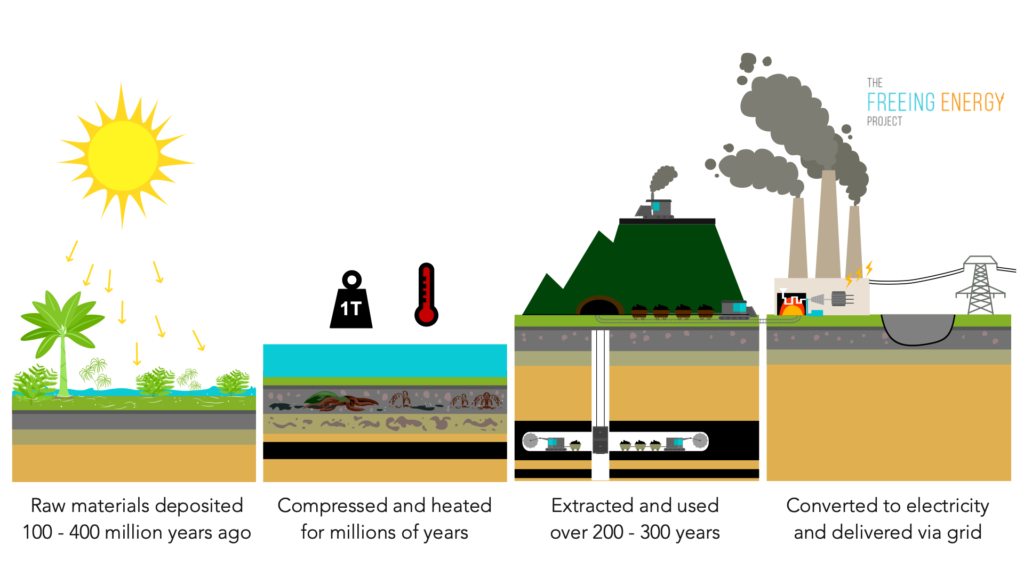
During earth’s Carboniferous Period, over 300 million years ago, the continents were covered with plants. Like today, those plants used photosynthesis to capture the sun’s energy, combine it with CO2 from the atmosphere, and convert it to carbon-based energy. As those plants died, many found their way to the bottom of huge swamps. Over hundreds of millions of years, geologic processes compressed and concentrated these carbon-rich dead plants into the coal we mine today. In fact, coal is between 50% and 98% carbon by weight.
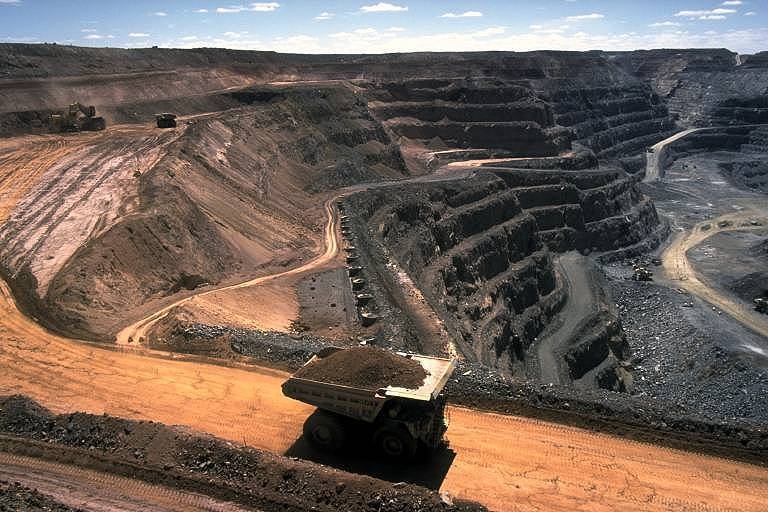
About two-thirds of US coal is obtained using a technique called surface mining. This includes mountaintop removal and strip mining. The rest is dug up using traditional underground mining. Since most US coal comes from just three states (see below), about 70% of it is distributed by railroads for use in almost every state in the country. About 90% of coal is used to make electricity, with the rest being used for steel and various chemicals. Once coal arrives at power plants, it’s pulverized and burned in high-temperature boilers to make super-heated steam which turns generator turbines to make electricity. Coal combustion creates a range of waste products including sulfur dioxide, mercury, uranium, and carbon dioxide (see: How much CO2 and pollution comes from burning coal?).
The US dominates world coal reserves
GET MONTHLY NEWS & ANALYSIS
Unsubscribe anytime. We will never sell your email or spam you.
The US sits on 22% of the planet’s coal reserves, the largest of any country — sometimes earning the moniker of the “Saudia Arabia” of coal. Australia, China, Russia, and India make up more than half the rest. Within the US, just three states, Montana, Illinois, and Wyoming hold more than half the country’s coal reserves.
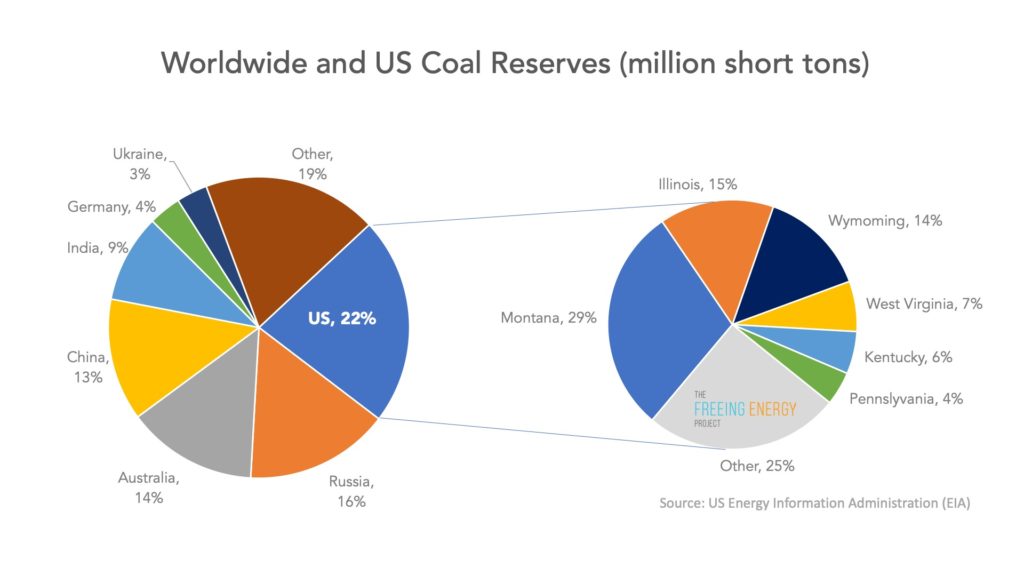
China is, by far, the largest consumer of coal
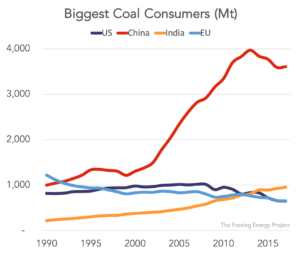
Despite having a bit more than half the coal reserves of the US, China burned five times more coal in 2017. Even as China’s central government seeks to level off its domestic coal consumption, it’s aggressively building 21 GW of new coal plants across the world as part of its Belt and Road Initiative.
As coal consumption from China and India continues to increase, they will be, by far, the largest source of global coal-based greenhouse emissions.
Summary
Coal is a geologic gift. While it took hundreds of millions of years to create, it is providing humanity with a few hundred years of accelerated development and prosperity. The abundance of cheap coal and huge power plants lifted region after region out of economic malaise and into middle-class powered economies (see: America was built on coal). It’s hard to imagine anywhere in the world reaching prosperity without coal, at least in the past. But, all that has changed in the 21st century. For the first time in the history of electricity, we have a better option than a coal-powered-grid. Much better.

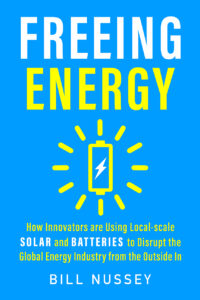


5 Responses
You have shown that for additional power in the U.S., Plants using silicon solar cells from China, are much more economic than new coal burning plants. From the standpoint of the Government of China, how long will it take for new solar plant production to outpace new coal burning plant production? Is there progress in this direction?
Does China have any intermittancy-filling options, other than coal, or huge batteries?
Newt, great questions. They warrant more research but three quick thoughts. First, China is rapidly adopting wind. In many places, wind power peaks at different times of the day and the year so, together, solar and wind mean even less reliance on outside generation to balance out intermittency. Second, China is building massive grids across the country. On a day to day basis, this allows them to deliver power from places with sunny weather to places with cloudy weather, reducing the need for storage (or other) during the day. And, third, China has a lot of hydro. As I understand it, hydro can attenuate its output and thus be used to compensate for the intermittency of solar.
Bill, Thanks for the reply.
Hydro can not only smoothly attenuate, under continuous control, but pumped hydro can do energy storage, for a season, not just a day. Probably not easy to research, but does new hydro, in China, provide large afterbays, to increase pumped storage capacity?
From the standpoint of global climate, it would seem more important, even though more difficult, to help China replace coal, than anything in the U.S.
Newt, great question on China’s ability to use their massive hydro resources to as pumped hydro. It bears more research. My pro-nuclear friends make the powerful point that the success (or lack of) new nuclear is far more important in China and India than in the US. They believe that only nuclear has the sheer scale to replace plans for gigawatts of new coal. Clearly, China is building a lot of new nuclear plants but not enough to offset their ongoing new coal plants.
Coal is not an issue of a blacked and obnoxious air that were spewed in the kiln burner but the issue here is the equipment which must be provided with exactly scientific instrument that would varrying the effect of a carbon emmission toward the air.It is unpresidented to conclude that coal have much contributory factors towards obnoxious emmission but as I observed it the usage for which like a dumping space sans measures to prevent an outright exposure of the emmission of smoke thru the air is also like an attitude of a reckless and tackless parents treatment to their children. Basically coal is not the problem but what is the problem exist is that its usage and lacked of scientific equipment to prevent it from spewing to the air directly. As such i am not favorable to cease of the use of coal but measures and policy by the regulators must be enforced in any country to avoid hazard predicament in society and the environment as well